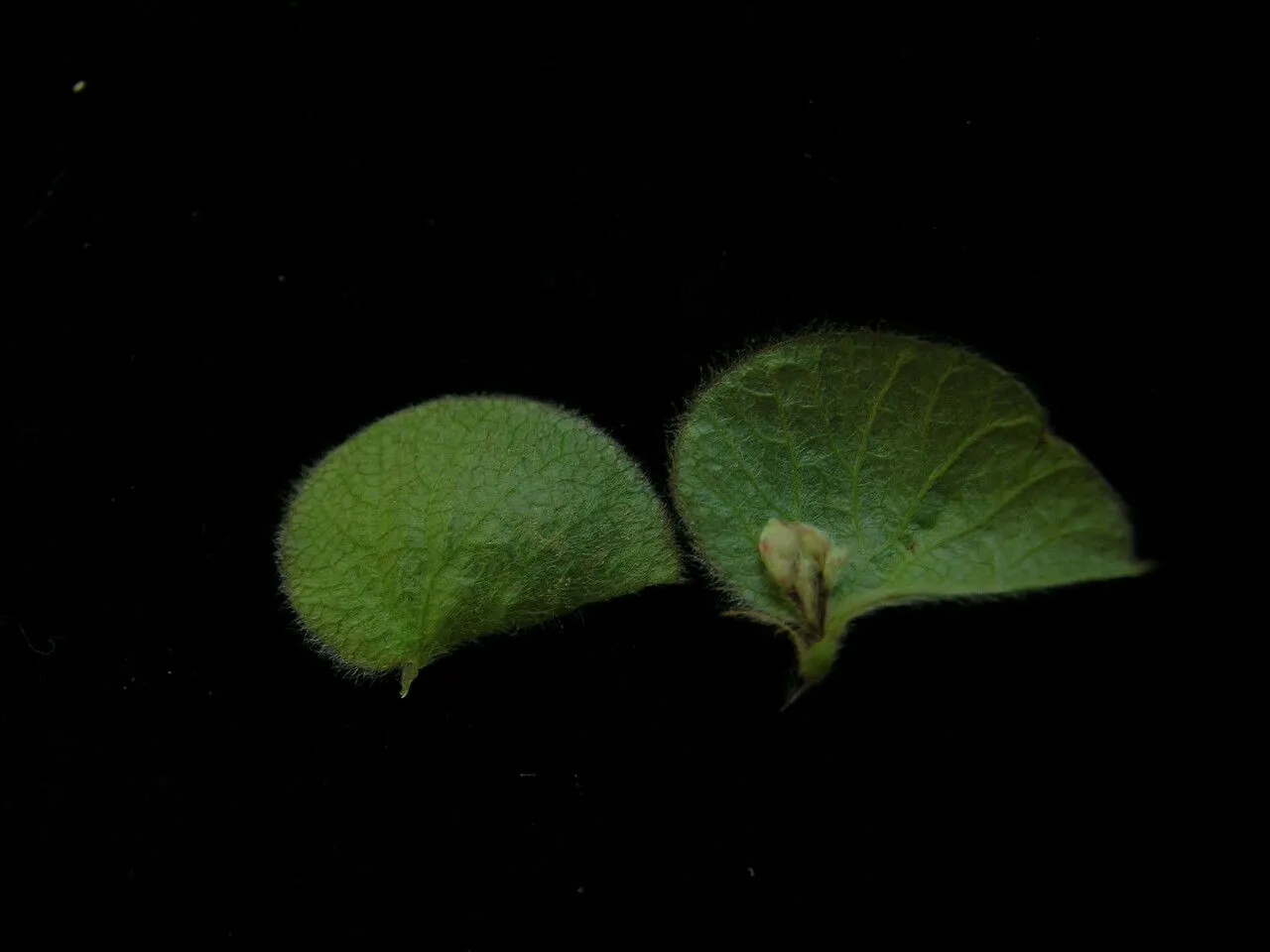
Author: (L.) W.T.Aiton
Bibliography: Hortus Kew. 4: 350 (1812)
Year: 1812
Status: accepted
Rank: species
Genus: Flemingia
Vegetable: False
Observations: Trop. & Subtrop. Asia to NW. Pacific
Wild hops, scientifically known as Flemingia strobilifera, is a fascinating member of the Fabaceae family, which exhibits a notable presence across the tropical and subtropical regions of Asia extending to the northwestern Pacific. This plant, first described in detail in the early 19th century, captures botanical attention for its unique characteristics and diverse applications.
Emerging from the rich floristic diversity of its native regions, Flemingia strobilifera stands out with its distinctive floral structures and robust adaptability to various environmental conditions. The plant typically thrives in a range of habitats from moist woodlands to dry open fields, showcasing its versatile nature. It has developed a resilient growth pattern capable of withstanding the varied climatic conditions encountered throughout its extensive geographical range.
The wild hops plant is particularly valued not only for its ecological contributions but also for its historical and contemporary utility. Known for its clusters of attractive, cone-like flowers that resemble those of true hops, Flemingia strobilifera possesses aesthetic appeal that has made it a popular choice in ornamental gardening. Additionally, it holds medicinal properties known to traditional medicine practitioners in several cultures within its native range. Various parts of the plant are utilized for their therapeutic benefits, including treatments for inflammation, pain relief, and other ailments.
Botanically, Flemingia strobilifera is documented in “Hortus Kewensis” (Volume 4, page 350, published in 1812) by the botanist William Townsend Aiton. Aiton’s extensive work in cataloging plant species includes a comprehensive description of this species, highlighting its significance and distinct botanical features.
This plant’s contributions extend beyond aesthetics and traditional medicine. In agricultural practices, it serves as a vital cover crop aiding in soil fertility through nitrogen fixation, thanks to its membership in the legume family. Its roots engage in symbiotic relationships with nitrogen-fixing bacteria, enriching the soil and promoting sustainable farming practices.
In summary, Flemingia strobilifera, or wild hops, is not merely a plant but a vibrant participant in the ecological tapestry of its native regions. It supports biodiversity, enriches soils, adorns gardens, and continues to be a subject of scientific and medicinal interest. Its enduring presence from the tropics to the subtropics of Asia and beyond underscores its adaptability and essential role within both natural and human-altered landscapes.
Eng: wild hops, wildhops
En: Wild hops, Wildhops
Taken Dec 12, 2021 by Paridhi Shah (cc-by-sa)
Taken Dec 12, 2021 by Paridhi Shah (cc-by-sa)
Taken Jun 18, 2017 by Tela Botanica − Guy VAN LAERE (cc-by-sa)
Taken Jun 18, 2017 by Tela Botanica − Guy VAN LAERE (cc-by-sa)
Taken Nov 26, 2021 by Ravi Kiran (cc-by-sa)
Taken Nov 27, 2004 by Royal Botanic Garden Edinburgh – Anonymous (cc-by-nc)
Taken Feb 12, 2020 by Lenny Romauli Lenny (cc-by-sa)
Taken Feb 7, 2021 by Nasirul Islam (cc-by-sa)
Taken Jun 24, 2022 by Delblond Michel (cc-by-sa)
Taken Nov 14, 2022 by Sandesh Gharti (cc-by-sa)
Taken Jan 8, 2008 by Víquez Carazo Manuel (cc-by-sa)
Taken Nov 24, 2004 by Royal Botanic Garden Edinburgh – Anthony G. Miller (cc-by-nc)
Taken Nov 27, 2004 by Royal Botanic Garden Edinburgh – Anonymous (cc-by-nc)
Taken Mar 7, 2021 by hugues Cadet (cc-by-sa)
Taken May 9, 2020 by Marine Garcia (cc-by-sa)
© copyright of the Board of Trustees of the Royal Botanic Gardens, Kew.
© copyright of the Board of Trustees of the Royal Botanic Gardens, Kew.
© copyright of the Board of Trustees of the Royal Botanic Gardens, Kew.
Taken Feb 28, 2019 by Daniel Barthelemy (cc-by-nc)
Taken Feb 28, 2019 by Daniel Barthelemy (cc-by-nc)
Taken Sep 23, 2020 by Daniel Barthelemy (cc-by-nc)
Taken Apr 17, 2008 by Tela Botanica − Marc Chouillou (cc-by-sa)
Taken Nov 27, 2004 by Royal Botanic Garden Edinburgh – Anonymous (cc-by-nc)
Taken Nov 27, 2004 by Royal Botanic Garden Edinburgh – Anonymous (cc-by-nc)
Taken Nov 27, 2004 by Royal Botanic Garden Edinburgh – Anonymous (cc-by-nc)
Taken Nov 27, 2004 by Royal Botanic Garden Edinburgh – Anonymous (cc-by-nc)
Taken Nov 27, 2004 by Royal Botanic Garden Edinburgh – Anonymous (cc-by-nc)
Taken Nov 24, 2004 by Royal Botanic Garden Edinburgh – Anthony G. Miller (cc-by-nc)
Growth habit>: Subshrub, Shrub
Family: Myrtaceae Author: (F.Muell.) K.D.Hill & L.A.S.Johnson Bibliography: Telopea 6: 402 (1995) Year: 1995 Status:…
Family: Rubiaceae Author: Pierre ex A.Froehner Bibliography: Notizbl. Bot. Gart. Berlin-Dahlem 1: 237 (1897) Year:…
Family: Sapindaceae Author: Koidz. Bibliography: J. Coll. Sci. Imp. Univ. Tokyo 32(1): 38 (1911) Year:…
Family: Asteraceae Author: A.Gray Bibliography: Pacif. Railr. Rep.: 107 (1857) Year: 1857 Status: accepted Rank:…
Family: Fabaceae Author: Medik. Bibliography: Vorles. Churpfälz. Phys.-Ökon. Ges. 2: 398 (1787) Year: 1787 Status:…
Family: Aspleniaceae Author: (Cav.) Alston Bibliography: Bull. Misc. Inform. Kew 1932: 309 (1932) Year: 1932…